Canon PowerShot A650 is a great camera with 12.1-megapixel sensor, 6x opt,35mm film equivalent and many more….is now reviewed….
Canon today strengthens its PowerShot A-Series range with two feature-packed new models. The elegant PowerShot A650 IS offers a range-leading 12.1 Megapixel CCD, 6x optical zoom lens and a 2.5” vari-angle LCD, while the compact PowerShot A720 IS combines an 8.0 Megapixel CCD with a 6x optical zoom lens. Equipped with optical Image Stabilizer technology1 and advanced high ISO capabilities, both cameras offer a comprehensive solution to image blur.
Replacing the PowerShot A640 and PowerShot A710 IS respectively, the PowerShot A650 IS and A720 IS also benefit from Canon’s DIGIC III processor, which powers Face Detection AF/AE/FE and Red-Eye Correction* for improved people shots.
The Canon A650IS is a midsized point and shoot digital camera with many features found only in more advanced cameras. It’s a good alternative to larger DSLRs when size/weight/price are issues. It has a 12.1 megapixel sensor behind a 7.4-44mm f2.8 image stabilized optical zoom macro lens (very long for its type, equivalent to a 35-210mm 35mm SLR). It records images with the Canon Digic III picture engine, with ISOs from 80-1600 at standard resolution (up to 4000×3000), and ISO 3200 at diminished (1600×1200) resolution. It has an optical viewfinder in addition to the 2.5” tilt/pivot LCD viewfinder. It accepts SD and SDHC data cards. I’ve read on different websites that both 4GB and 8GB are the largest card it can accept. The manual lists no such limitation. I’ve personally never used a card larger than 2GB in it, which is good for about 100 high quality pictures stored in both jpeg (Superfine quality, 4000×3000) and RAW format. (Nota Bene: The A650 does not store RAW picture format natively.
PowerShot A650 IS:
1.12.1 Megapixels and 6x optical zoom.
2.Total anti-blur solution with optical Image Stabilizer, High ISO Auto and Auto ISO Shift.
3.2.5” vari-angle LCD with real-image zoom optical viewfinder.
4.DIGIC III with Face Detection AF/AE/FE and Red-Eye Correction in playback.
5.21 shooting modes including full manual control and Long Play VGA movies.
6.Optional accessories including lenses and waterproof case.
Canon provides 4 AA alkaline batteries, a 32MB memory card, wrist strap, CD-ROM software, AV and USB cables and an owner’s manual with each camera.
Camera dimensions are about 4.41 x 2.67 x 2.21 inches with the lens retracted, and a shooting weight (4 AA batteries and memory card installed) of 13.25 ounces. The camera accepts SD, SDHC, and MMC memory cards.
The A650 IS will capture JPEG still images in seven pixel sizes: 4000 x 3000 (L), 3264 x 2448 (M1), 2592 x 1944 (M2), 1600 x 1200 (M3), 640 x 480 (S), 1600 x 1200 (postcard) and 4000 x 2248 (widescreen).
Movies may be captured in AVI format at 640 x 480 pixels and 30 frames per second (fps) or 30 fps LP (selecting LP results in file sizes of 960KB/second versus 1920KB/second) ; 320 x 240 (30 fps) for up to 4GB or 60 minutes and 160 x 120 for 3 minutes at 15 fps.
This camera really shines when it’s in bright light and you don’t push the lens to its limits of wide angle and wide open. Keep the zoom from 14.7mm and higher (zoomed closer in), and the aperture at 4.5 or smaller (larger f numbers), and you see real Canon quality, comparing favorably to a 35mm Canon L series lens I have for my SLR that cost nearly 10 times what the entire A650 cost. The 80, 100, and 200 ISO settings produce stunning images with little noise, good contrast, and tremendous color. The macro mode works very well. Keeping the A650 within the settings mentioned above you could use it for virtually any professional application- if you didn’t have to explain to a client why you were pulling out a ‘consumer grade’ camera. It would make a great last ditch backup camera for a pro, taking up little more room than a 100mm lens in a camera bag. I bought it as an ultra lightweight alternative to do landscape work in difficult to access locations I don’t want to haul a full 35mm kit to, and for this it functions quite well.
A nice feature the A650 has, that most point and shoot digital cameras don’t, is the ability to mount filters. You must buy an optional filter holder which attaches to a mount behind a removable trim ring at the base of the lens. This is important because it lets you use a polarizer or IR filter- effects that aren’t easy to achieve in software post processing, which brings us to yet another unusual feature. Most digital cameras can’t take infrared pictures. The A650 can. I haven’t tried any filter stronger than an IR72, but it definitely works.
The main weakness of the A650 is that they’ve pushed the lens design a bit too much. For taking family photos or snapshots I wouldn’t hesitate to use the lens at any f stop or focal length- and since this is the market maybe I shouldn’t even point it out as a weakness, but the camera is perfectly suited for serious photographic work if you zoom in and stop down a bit. Canon makes remarkable lenses and in many situations this lens is great.
Another little niggling thing is that while it has many different program modes, they all seem to default to using the lens wide open- even the scenery mode where in theory you want maximum depth of field. It’s not really a problem as it has both a full manual and an aperture priority mode.
With an integral handgrip-style body (like most of the A-series cameras), the 650 IS proved a pleasure to hold and shoot one-handed. With the power on/off, shutter button, zoom control and mode dial all arranged in close proximity on the camera top, it’s an easy task to start up, select a mode, zoom and shoot one-handed if need be.
Portrait, landscape, night snapshot, kids & pets, stitch assist and “SCN” modes may be selected directly from the camera’s mode dial. A “SCN” selection leads to additional choices of night scene, indoor, foliage, snow, beach, fireworks, aquarium, underwater, and ISO 3200. The camera automatically adjusts settings for what it considers optimal shooting in any of these conditions, allowing for little more than image size, quality and exposure compensation inputs from the user.
The A650 IS permits manual red eye correction, image resizing and attaching sound memos to images.
Exposure compensation of +/- 2 stops in 1/3 EV increments is available except in auto, movie and manual (M) exposure modes.
Evaluative metering is the default method, with center-weighted and spot metering options available. Spot metering can be further refined to meter the center of the monitor or to correspond to the AF frame. Evaluative metering was used for the images captured by the A650 IS. In general, it did a good job across a broad range of lighting conditions/subjects, but as with most cameras, it would on occasion lose highlights in high contrast shots such as the breaking wave in the shots that follow.
Canon quotes a flash range of 1.6 feet to 11 feet at wide angle, and 1.6 feet to 6.6 feet at telephoto, both with auto ISO. These ranges seemed accurate in my use. The flash did a good job with color rendition and exposure.
Default color with the A650 IS seemed typical based on recent Canon P&Ss I’ve reviewed, which is to say pleasing and accurate. Color may be adjusted to “Vivid” via the “my colors” mode in the P, Tv, Av, M, movie and stitch-assist modes. Here’s a look at the default and “vivid” color renditions.
The A650 IS powers up in about a second, acquires focus quickly in good light and fires the shutter with minimal lag. Shutter performance with flash is also good – the camera uses the red eye reduction lamp rather than pre-flashes in red eye reduction mode. Shutter speeds may vary from 15 seconds to 1/2000thsecond. With the AF assist beam on, focus acquisition times were quite good in low light conditions.
The 6X Canon zoom lens was quite uniformly sharp across the frame at both wide and telephoto ends, with some slight softness in the corners. There was some barrel distortion (straight lines bow out from center of image) at the wide end which could impact images with prominent straight lines for sharp-eyed viewers. Some purple fringing was present in high contrast boundary areas, but only when greatly enlarged. Overall, very good lens performance.
Canon PowerShot A650 specifications :
1.Sensor:
• 1/1.7″ Type CCD.
• 12.1 million effective pixels.
2.Image sizes:
• 4000 x 3000.
• 4000 x 2248.
• 3264 x 2448.
• 2592 x 1944.
• 1600 x 1200.
• 640 x 480.
3.Movie clips:
• 640 x 480 @ 30fps.
• 320 x 240 @ 30fps.
• 160 x 120 @ 15fps.
4.File formats:
• JPEG (Exif v2.2).
• DPOF 1.1.
• AVI (Motion JPEG + WAVE).
5.Lens:
• 35-210mm (35mm equiv).
• 6x optical zoom.
• F2.8-4.8.
6.Image stabilization: Yes (Lens-Shift).
7.Conversion lenses: Yes.
8.Digital zoom: up to 4x.
9.FocusL: TTL.
10.AF area modes:
• Face Detection AiAF.
• 9-point AiAF.
• 1-point AF (center or FlexiZone).
• Manual focus.
11.AF lock: Yes (on/off selectable).
12.AF assist lamp: Yes.
13.Focus distance: Closest focus distance 1cm.
14.Metering:
• Evaluative (linked to Face Detection AF frame).
• Center-weighted average.
• Spot (centre or linked to Face Detection AF or FlexiZone AF frame).
15.ISO sensitivity:
• Auto.
• High ISO Auto.
• ISO 80.
• ISO 100.
• ISO 200.
• ISO 400.
• ISO 800.
• ISO 1600.
• AE lock.
16.Modes:
• Auto.
• Program AE.
• Shutter Priority AE.
• Aperture Priority AE.
• Manual.
• Custom.
• Portrait.
• Landscape.
• Night Snapshot.
• Kids & Pets.
• Stitch Assist.
• Movie.
• Special Scene.
17.Scene modes:
• Portrait.
• Landscape.
• Night Snapshot.
• Kids & Pets.
• Stitch Assist.
• Movie.
• Night Scene.
• Indoor.
• Foliage.
• Snow.
• Beach.
• Fireworks.
• Aquarium.
• Underwater.
• ISO 3200.
18.White balance:
• Auto.
• Daylight.
• Cloudy.
• Tungsten.
• Fluorescent.
• Fluorescent H.
• Underwater.
• Custom.
19.Self timer: 2 or 10sec, custom.
20.Flash:
• Auto, Flash On, Flash Off, Slow Sync, Red-eye reduction.
• Flash compensation: +/- 2EV in 1/3 stop increments.
• Face Detection FE.
• Safety FE.
• Flash exposure lock.
• Second curtain sync.
• Range (Auto ISO): 50cm – 3.5m (wide) / 2m (tele).
21.LCD monitor:
• 2.5-inch Vari-angle P-Si TFT.
• 173,000 pixels.
• 100% coverage.
22.Connectivity:
• USB 2.0 Hi-Speed.
• AV out (PAL / NTSC switchable).
23.Storage:
• SD, SDHC, MMC, MMCplus , HC MMCplus compatible.
• 32 MB card supplied.
24.Power:
• 4x AA Alkaline or NiMH batteries.
• Optional AC adapter ACK600.
25.Weight (no batt): 200g (7.0 oz).
26.Dimensions: 97.3 x 67.0 x 49.1 mm (3.8 x 2.6 x 1.6 in).
Resources :digitalcamerareview.com,dpreview.com,photographyreview.com

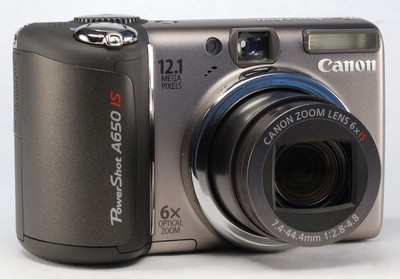
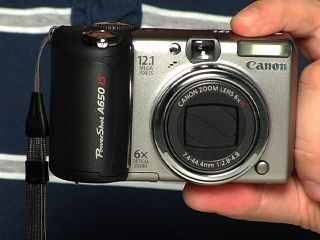
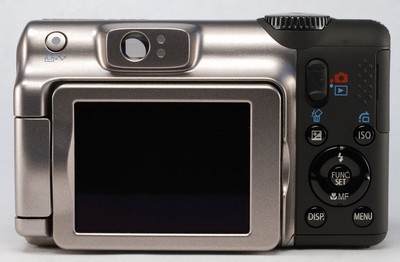
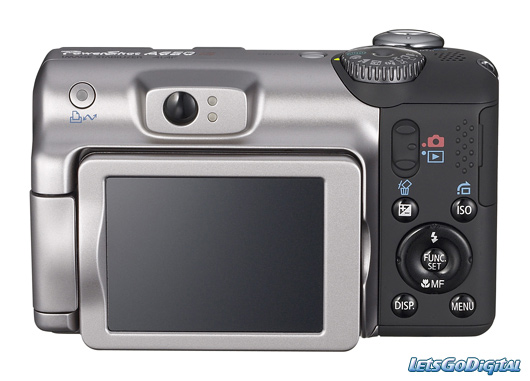

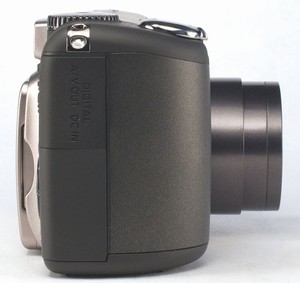

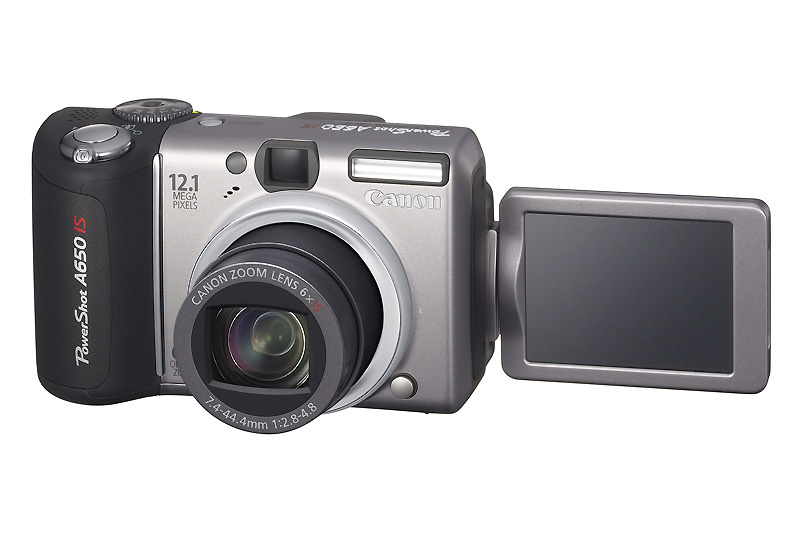
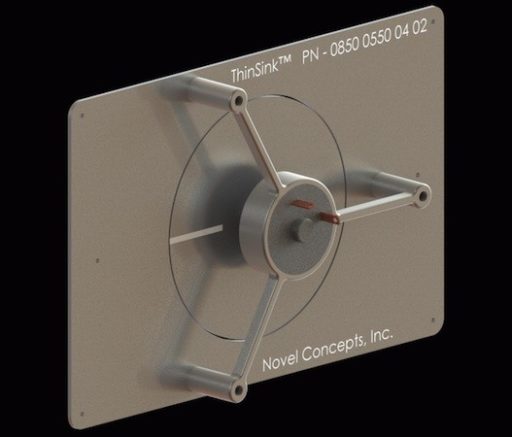
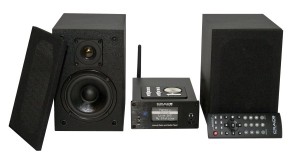
Pingback: Gadget Newz
Pingback: Canon PowerShot A650 review | TheTechJournal.com | Digital Camera Reviews and More
Pingback: Lorrin Lee’s HALF MOON CAY. Bahamas. Caribbean. Cruise. Steel Drums. Noordam. Horses. | Cruise the Caribbean
Pingback: Information About Canon Powershot Sd850 is Digital Camera and Reviews
Pingback: Is there any manual or resource website I can visit to teach me the basics in digital photography? | Digital Photography